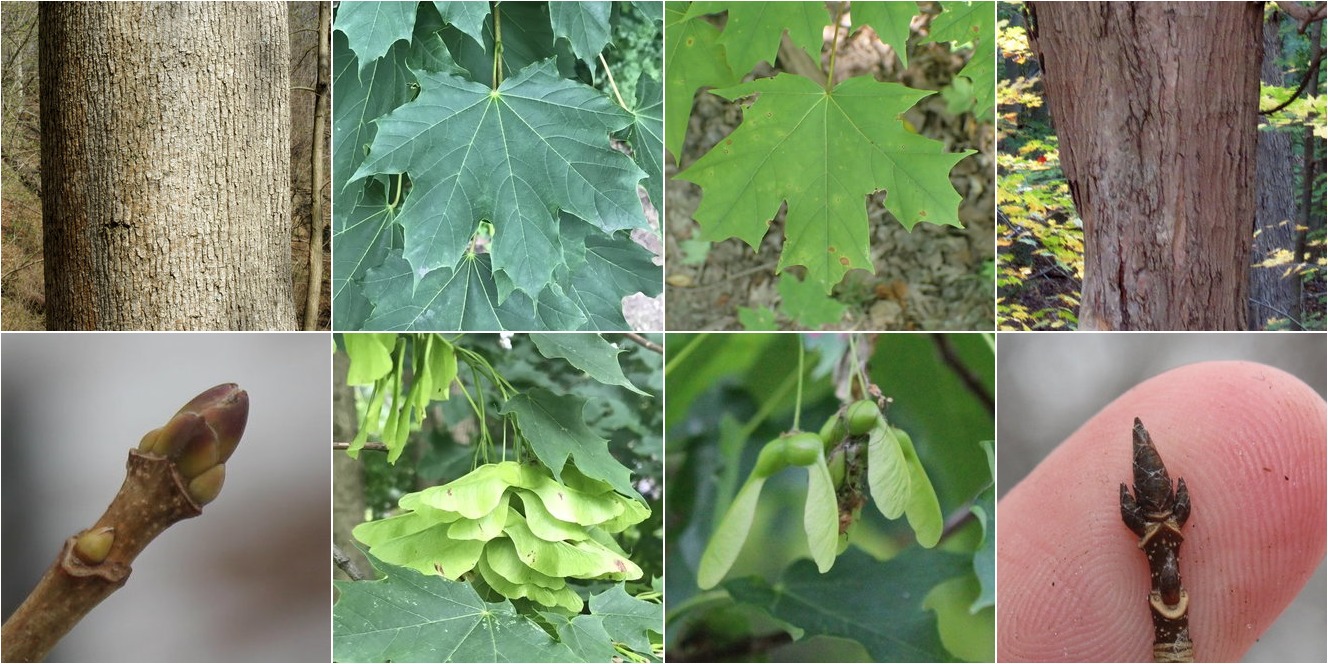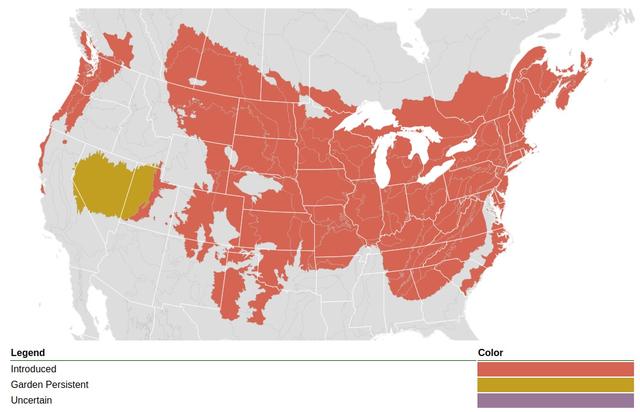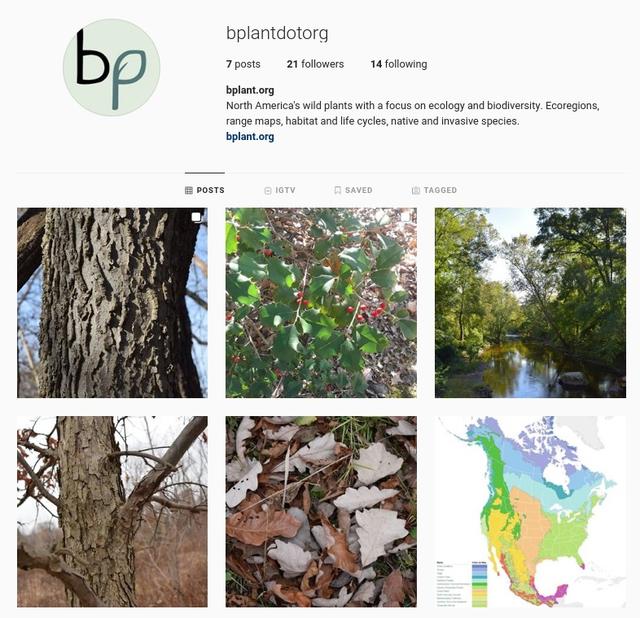What We Achieved in 2019
December 30th, 2019 by Alex Zorach
2019 has been an extraordinary year for bplant.org! From our launch in January to now, we have made incredible strides both in developing the programming behind the site, and populating the site with articles, maps, images, and other data.Here we summarize what we've accomplished in the past year, and highlight our progress towards various goals.
Plant Articles & Photos
We have published 35 articles, meaning that the articles are listed on on plant list and also able to be indexed and returned in external web searches. However, we have 6174 stub entries for plant species. Of these, a total of 287 articles are under construction, with some written content, and 120 of them have a main or featured image. You can read any of the incomplete articles and stub entries by searching for the plants by common or scientific name in the search box at the top of each page.We also added 701 plant photos. These images include both original photography and open-licensed images including public domain works and ones with Creative Commons licensing. We show the licensing for each image, and we use open-licensed images whenever possible, so you can bplant.org as a repository of freely usable plant photographs to use in your own educational materials.
 This is one of our original photos, showing the leaf scar of an eastern black walnut (Juglans nigra); this photo appears in our guide on distinguishing black walnut from butternut. Photo © Alex Zorach, CC BY-SA 4.0.
This is one of our original photos, showing the leaf scar of an eastern black walnut (Juglans nigra); this photo appears in our guide on distinguishing black walnut from butternut. Photo © Alex Zorach, CC BY-SA 4.0.Plant Comparison / ID Guides
We have completed 29 plant comparison / ID guides, and we have 27 more that are partially complete and still viewable. We have focused on plant species common in eastern North America, and compared them to the species they are most commonly confused with.Here are the complete guides we published in 2019:
- Red Maple vs Sugar Maple
- Rhomboid Mercury vs Virginia Threeseed Mercury
- Norway Maple vs Sugar Maple
- White Snakeroot vs Late Boneset
- Northern Red Oak vs Black Oak
- Eastern Poison Ivy vs Fragrant Sumac
- Box Elder vs Eastern Poison Ivy
- Eastern Poison Ivy vs Boston Ivy
- American Beech vs European Beech
- Norway Maple vs Red Maple
- Red Maple vs Mountain Maple
- Silver Maple vs Sugar Maple
- Red Maple vs Silver Maple
- Tree of Heaven vs Staghorn Sumac
- Eastern Black Walnut vs Tree of Heaven
- Greater Celandine vs Celandine Poppy
- Pitch Pine vs Eastern White Pine
- Pin Oak vs Scarlet Oak
- Northern Red Oak vs Scarlet Oak
- Scarlet Oak vs Black Oak
- Sweet Birch vs Yellow Birch
- Red Spruce vs Norway Spruce
- White Ash vs Green Ash
- Black Ash vs Green Ash
- White Ash vs Black Ash
- White Spruce vs Red Spruce
- Eastern Hemlock vs Norway Spruce
- Sugar Maple vs Black Maple
- White Spruce vs Balsam Fir
 We set these guides up so that the images of the most important ID characteristics are automatically made into a collage when sharing them on social media. Try for yourself pasting the URL of one of these guides into Facebook or Twitter and see the collage appear!
We set these guides up so that the images of the most important ID characteristics are automatically made into a collage when sharing them on social media. Try for yourself pasting the URL of one of these guides into Facebook or Twitter and see the collage appear!The four images on the left here show Norway Maple (Acer platanoides), whereas on the right are pictures of a Sugar Maple (Acer saccharum).
Ecoregion Maps & Locator
The ecoregion section of our site is our crowning achievement that has progressed much more quickly than we had anticipated. We successfully imported data on 3 levels of ecoregions for all of North America, and 4 for the continental united states. We generated interactive maps for all of these regions, and also generated maps of the ecoregions of all lower 48 states. You can reach these from the "Regions" tab at the top of each page, and there are also further links in the page footer.We also developed and published an ecoregion locator, which can enable you to pin a point on a map and see the full hierarchy of regions that the point is in.
Ecoregion Articles & Images
One of our moderate-term goals is to write articles and find illustrative images for each of the ecoregions listed on our site. As there are a total of 1209 articles to be written, this is an ambitious undertaking. We currently have articles completed for 222 regions, and 6 more under construction. 51 articles currently have images.However, regionally, we have created a more complete landscape of ecoregions for the Mid-atlantic and northeast. For example, we have completed ecoregion articles on all the level 4 ecoregions of Ohio, Pennsylvania, Maryland, Delaware, New Jersey, New York, Connecticut, Rhode Island, Massachussets, Vermont, and New Hampshire.
We have been expanding out regionally, but also prioritizing ecoregions near major population centers throughout the U.S. This will help us to first cover the regions most relevant to people viewing our site.
Range Maps & Distribution Info
One of our key goals is the development and maintenance of plant range maps based on ecoregions rather than political boundaries.We began our foray into range maps by importing data to auto-generate range maps of native plants in the continental U.S., and we have published around 6000 such maps, although they have numerous shortcomings as we explained in our August blog post.
However, we are also well underway building range maps for introduced (including invasive) plants. For a preview, see our range map for garlic mustard (Alliaria petiolata), which to our knowledge is the first published ecoregion-based range map of garlic mustard in North America; that map is currently accurate to level 3 ecoregions.
 Garlic mustard (Alliaria petiolata) is one of the most important and ecologically-damaging invasive plants in North America; this range map shows which level 3 ecoregions it has been introduced to, and also shows one region where it is persistent in gardens (due to irrigation) but does not survive in the wild.
Garlic mustard (Alliaria petiolata) is one of the most important and ecologically-damaging invasive plants in North America; this range map shows which level 3 ecoregions it has been introduced to, and also shows one region where it is persistent in gardens (due to irrigation) but does not survive in the wild.Donations & Finances
We began accepting donations in mid-October, using Liberapay to facilitate regular donations. We raised a total of $158.34, representing donations of $164 and $5.66 in processing fees, amounting to 3.45% of donations. The only dedicated costs associated with bplant.org were $20.17 paid to our domain registrar and cloud hosting provider.These (and future finances) will also be viewable in our finances page, which is linked in the footer. Our goal is to be more transparent even than most non-profit organizations, both so that you can know how we are being run, and to set an example to inspire other organizations to be more open.
Please consider donating if you have not yet done so! We have not put much energy into soliciting donations; the more readily people donate, the less effort and resources we will need to put into fundraising, and the more we can put into directly working on the site. If you have not already done so, you can read our blog post about accepting donations and contact us if you have more questions!
Social Media Presence
In 2019 we first created a Facebook page, and later in the year, also created accounts on Twitter and Instagram. You can find these social media profiles, along with any others that we may add later, in the footer at the bottom of each page.We hope to use our social media accounts for multiple purposes: one is to publicize our site and reach new people interested in our site. A second is educational, by posting tidbits of informational material that may reach a broader audience of people who never actually visit the site. A third is interactive, to start a conversation and engage with people who have something to say about our site or about any topics we cover.
User Accounts and Interactive Features
We also developed a lot of the site's interactive features, including user profiles and the ability to upload photos and submit observations of plants and take notes on those observations. We also have a small group of users testing these features.However, we have not been prioritizing development of this aspects of the site for several reasons. One, we do not wish to duplicate the efforts of existing sites like iNaturalist, which already do an oustanding job of more casual reporting of living organisms, including plants.
We have been prioritizing more educational and informational content, because it is a weak point in the landscape of other plant websites. The plan is to make bplant.org focus on helping people develop more rigorous plant identification skills and also learn more about plants' ecology. People already experienced with how to identify plants can then use bplant.org to report observations in ways that can directly help us to build and tweak range maps and track plant populations with relevance to conservation efforts. People who want help with more elementary plant ID questions can use other sites including iNaturalist and various plant ID apps.
What's next?
In 2020, we plan to continue much of what we have already been doing, but we also have some exciting new undertakings.One key project, already well underway, is the development of a tool for building and maintaining plant range maps, which will help us to construct and update these maps with a minimum expenditure of time and effort. This will allow us to advance our goals of building range maps for introduced species and addressing shortcomings in our range maps of native species.
As our body of articles, ecoregions, and plant range maps and ID guides becomes more complete, you can expect to see new features such as the ability to generate plant lists by ecoregion, and the ability to keep track of which plants you are learning to identify in your particular regions.
We look forward to seeing you in 2020!
Archive of All Blogs
The Bias Against Tall Plants, November 11th, 2025
A Focus on Goldenrods (Solidago sp.), July 23rd, 2025
Disturbance and its Role in Plant Habitat Preferences, May 29th, 2025
What "Native" or "Introduced" Mean: Myths and Misconceptions, March 11th, 2025
Smarter & More Informative Search Results, January 13th, 2025
The Effect of the 2024 US Election on Plant Biodiversity and bplant.org, October 30th, 2024
The Problems With Nursery-Bought Plants, And The Solutions, October 8th, 2024
More Databases Linked & Search Improvements for Scientific Names, July 9th, 2024
Choosing The Best Common Names For Plants: Challenges & Solutions, April 19th, 2024
Range Map & Taxonomic Update Progress, January 31st, 2024
Giving Thanks To Everyone We Rely On, November 22nd, 2023
Thinking More Deeply About Habitat, April 5th, 2023
2022 Year-End Summary: Successes & New Goals, February 15th, 2023
New Databases Linked: Flora of North America & NatureServe Explorer, November 11th, 2022
All Range Maps 2nd Generation, Taxonomic Updates, & Fundraising Goal Met!, September 29th, 2022
More Range Map Improvements, POWO Interlinking, And Notes Fields, June 7th, 2022
Ecoregion-Based Plant Lists and Search, March 30th, 2022
Progress Updates on Range Maps and More, February 10th, 2022
The Vision for bplant.org, December 9th, 2021
New Server: Software & Hardware, August 30th, 2021
More & Improved Plant Range Maps, July 19th, 2021
A Control Section for Invasive Plants, April 15th, 2021
Progress Bars & State Ecoregion Legends, March 11th, 2021
Our 2020 Achievements, February 9th, 2021
Interlinking Databases for Plant Research, November 11th, 2020
A New Homepage, Highlighting Our Articles, July 29th, 2020
A False Recovery, But North Carolina's Ecoregions are Complete!, June 9th, 2020
We're Back After COVID-19 Setbacks, April 3rd, 2020
Help Us Find Ecoregion Photos, February 27th, 2020
What We Achieved in 2019, December 30th, 2019
Plant Comparison and ID Guides, October 30th, 2019
We Are Now Accepting Donations, October 14th, 2019
US State Ecoregion Maps, New Footer, Ecoregion Article Progress, and References, September 19th, 2019
Tentative Range Maps of Native Plants, August 12th, 2019
Ecoregion Locator and Interactive Maps, July 10th, 2019
Using Ecoregions Over Political Boundaries, May 13th, 2019
How We Handle Wild vs Cultivated Plants, April 16th, 2019
A Blog To Keep People Updated On Our Progress, April 8th, 2019
Sign Up
Want to get notified of our progress? Sign up for the bplant.org interest list!



